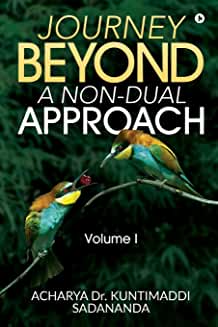Q: What is love in Advaita Vedanta? What is love for ‘god’? Despite the path of love’s many fruits, Is it not a dualistic concession? Without mAyA what is love?
A: Love is not really an ‘issue’ in Advaita. It may well be something that is spoke of frequently by modern (new-agey) teachers, because it is popularly an important subject in life, but it is necessarily a dualistic concept. There has to be a subject ‘lover’ and an objective ‘loved’. And of course the reality is non-dual. There is only the Self. In fact, the only scriptural reference I can think of is Brihadaranyaka Upanishad 4.5.6. Here, it is pointed out that a person loves his wife/husband/children etc. not for their sakes but for one’s own sake, i.e. the Self that is the Self of all. And it concludes with one of the most famous instructions in Advaita: “The Self, my dear Maitreyi, should be realized – should be heard of, reflected on and meditated upon. When the Self, my dear, is realized by being heard of, reflected on and meditated upon, all this is known.”
Love of God is certainly an interim element of the teaching for many, although perhaps the word ‘devotion’ is less emotive/confusing. This is more in the sense of surrender (of the fruit of action and so on).
You are right that it is a dualistic concept and therefore only of interim relevance in the teaching of Advaita. All concepts have to be given up in the end – including that of mAyA, and God… and Advaita!

